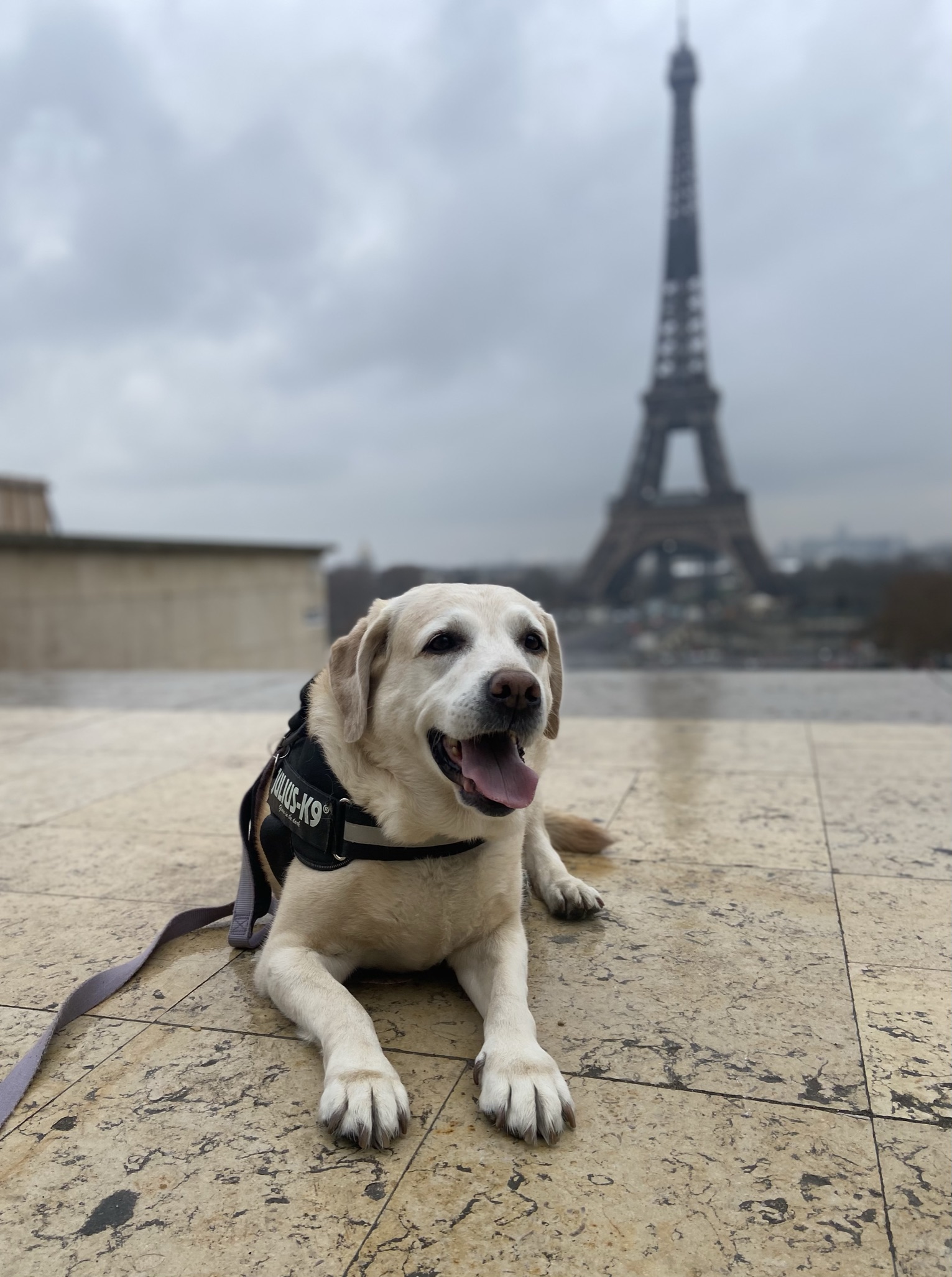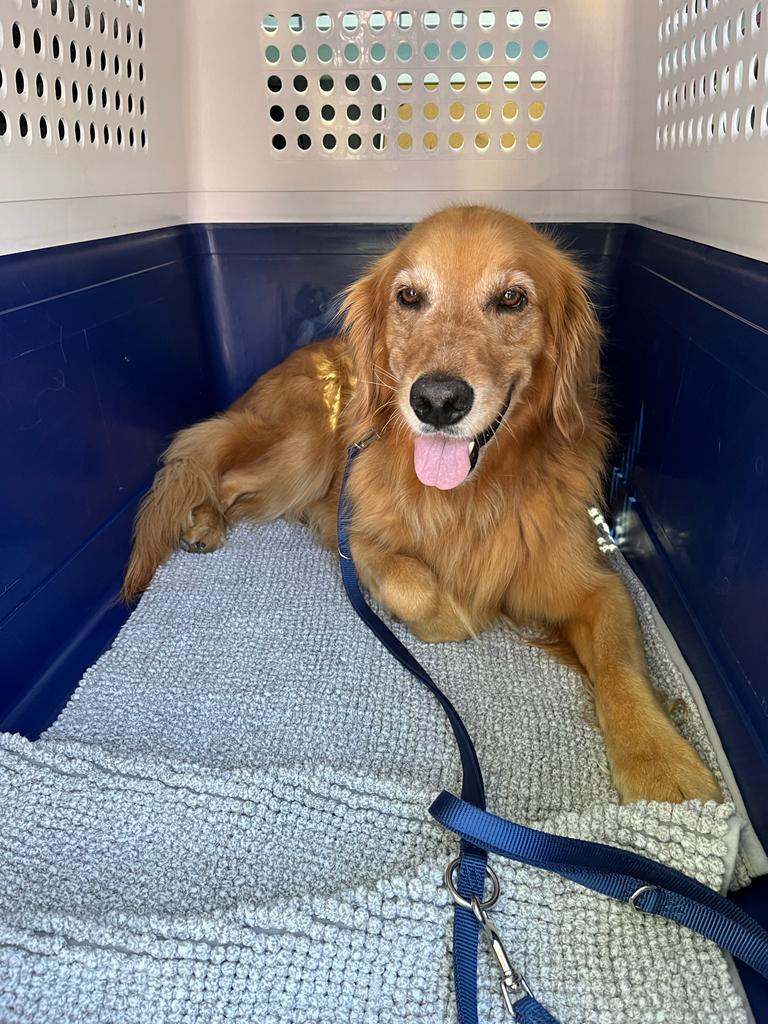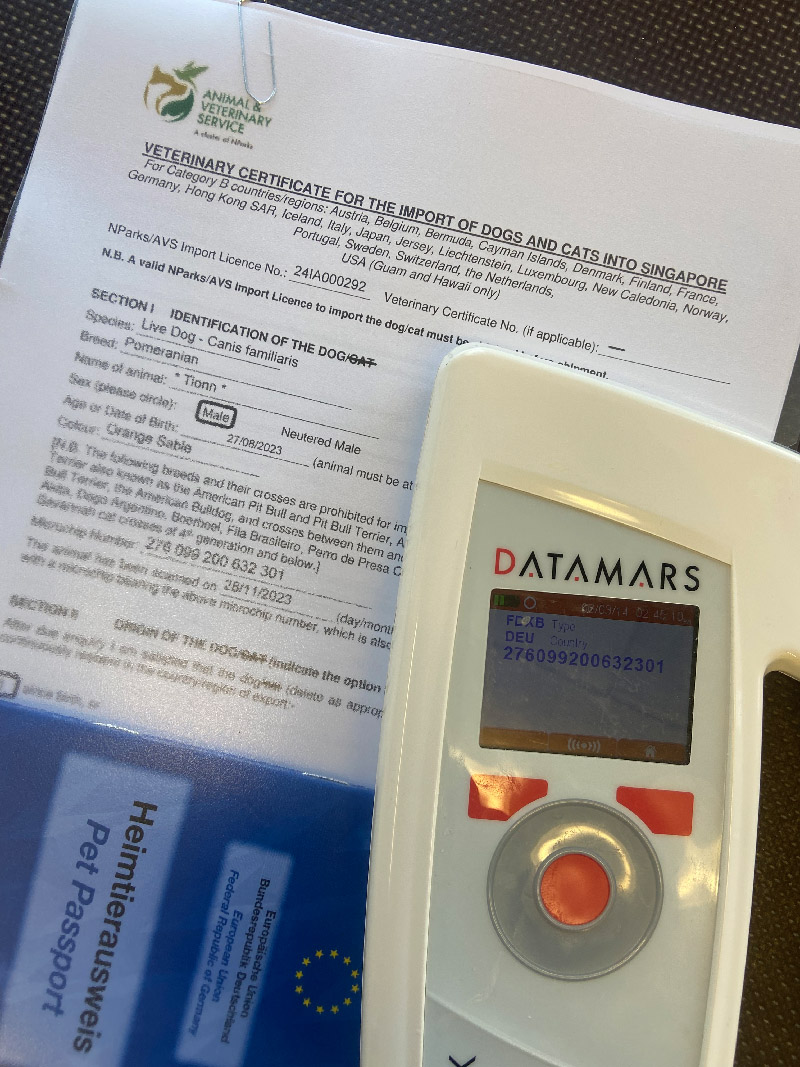Answers to questions about preparation and the trip.
Taking your favorite pet to another country is something that very few people do very often. Accordingly, there are many unanswered questions. Here are answers to frequently asked questions and tips on traveling with your pets, especially on an airplane.
Is it safe for my pet to travel by cargo?
Yes, the transportation by cargo is safe. The cargo compartment is heated & is under controlled pressure. The airlines and their handling agents handle live animals prioritized, which means animals are being brought to the aircraft as late as possible and are the first to be offloaded, making sure to avoid longer waits on the tarmac, particularly during extreme weather conditions.
Moving Animals has an in-depth specialist knowledge on choosing the best routing from any destination in the world to another. Whenever possible, we will try and book non-stop flights to minimize the stress.

Why does cargo cost more than excess baggage or in cabin?
Taking a dog or cat as excess baggage or in cabin is often much cheaper than a booking as cargo.
When taking a pet as excess baggage (also called AVI in hold) or in cabin, the airline’s main focus is the revenue on the passenger tickets and the pet is in that case an addition.
When a pet is booked as cargo, it’s a different price structure and usually charged by the volume of the crate calculating the storage loss. Furthermore, the airline is also considering and including the storage loss caused by a travel crate which must be loaded separately and cannot be stacked or covered with other baggage or cargo.
Another difference between a pet as excess baggage and cargo is the handling on ground. Depending on the airline & airport of origin, pets travelling as cargo are often first tendered to an animal station where animal care takers look after them until the last possible moment. Depending on the timing, they can even get out of the crate at the stations. Pets going as excess baggage may usually be checked in a little closer to the departure time, but will have to remain in their crates.
Most airlines have a limit on size & weight as excess baggage. This is due to the limitations of ground handling staff. In cargo, the handling agents have more possibilities for the loading, i.e. on a large pallet, where as AVI in hold, it can only be bulk loading.

Why do many airlines not accept snub-nosed dogs, so called brachycephalic dog and cat breeds?
“Brachycephalic” refers to a particular skull formation in the dog/cat giving a snub-nosed appearance. Examples of brachycephalic breeds include: Bulldogs, Pugs, Boston Terriers, Shih Tzu’s and Pekingese dog and Exotic or Persian cats.
The narrowed air passages of these breeds may make them more prone to breathing anomalies which can include snorting, snuffling and exercise intolerance. In some cases, hyper-excitement or stress and other factors related to the animal’s general health (overweight, age, etc.) temperament and environment may exacerbate any existing respiratory and/or other conditions and heighten the risks during the relocation process.
Brachycephalic pets are susceptible to increased risk of heat stroke and breathing problems when exposed to high temperatures.
A veterinary examination to assess the general health of the animal, crate training and using a crate one size larger than normal are mandatory. Sedation is not allowed for pets undergoing air travel, particularly brachycephalic breeds, due to further associated risks.
Furthermore, we highly recommend not to feed your dog or cat prior to departure. We will not ship brachycephalic pets during hot summer months at origin and destination airport.
While most airlines still have a complete embargo for snub-nosed dogs, some will allow acceptance under certain conditions (i.e. if temperature remains below 27°C at all stations) or if an IPATA assessment has been performed. Some airlines are accepting snub-nosed cats for transport, depending on breed and only under certain conditions.
Link to IPATA’s Brachycephalic certification program: https://www.ipata.org/brachycephalic-certification-program
This program is a great tool to identify those dogs and cats that shouldn’t be travelling. If IPATA’s assessment comes to the conclusion that your pet shouldn’t travel, it must be followed, for the safety of the pet.

Why does my dog need a CR82 crate?
(CR = container requirement)
Strong dog breeds may require a reinforced travel crate called CR82, due to the fact that dogs with strong bite force, such as Pitbulls or Rottweiler, may quickly destroy plastic crates. The breed list may vary from airline to airline, which is why it’s recommended to check if your dog requires one. If you have a dog, even if not on any list, that you know may destroy plastic crates, we highly recommend to go with a CR82.
Please be aware that forklift spacers must be provided if the total weight of the container plus the animal exceeds 60 kgs (132 lb).

What do you recommend to minimize the stress for my pet?
A journey by plane can be stressful for your pet, but there are a few measures to take in advance which can minimize the stress and help your pet to have a smooth and comfortable trip:
Especially for dogs: If your dog does not know being in a travel crate already, get the travel crate a few weeks prior planned travel date and start with a crate training. If we arrange your pet’s transport, we can pre-deliver the crate (upon request, depending on location) or the crate can be collected from our office.
Make sure your pet is fine with meeting new people or new surroundings, e.g make loads of positive encounters with strangers, take your dog for a walk near a noisy area like train station, airport.

What are the import requirements for a dog or cat to enter Switzerland?
The import requirements vary depending on the country of origin (difference between coming from the EU, 3rd country or rabies risk country) as well as whether it’s a commercial or non-commercial importation.
The Federal Food Safety and Veterinary Office (FSVO) offers a great online tool:
https://www.blv.admin.ch/blv/en/home/tiere/reisen-mit-heimtieren/online-hilfe-hunde-katzen-frettchen.html#par
For commercial importation into Switzerland, please check the following link: https://www.blv.admin.ch/blv/en/home/import-und-export/import.html
The requirements can be complex and overwhelming. Moving Animals has been importing all sorts of animals through Zurich and Geneva Airport. We will be able to assist you on any questions you may have in regards to the import conditions.

Should tranquillizers be given to my dog or cat?
The airlines as well as IATA (International Air Transport Association) strongly discourage the use of tranquilizers for pets traveling in the cargo hold as well as in the cabin. In certain cases, the airline staff, ground handling or animal caretakers will stop a pet from flying if they feel their safety is at risk.
Sedation of pets can cause lower blood pressure as well inappropriate behaviors such as loss of balance – this can be fatal for elderly or stressed animals.

Is my travel crate suitable?
IATA (International Air Transport Association) with the LAR (Live Animal Regulation) has a clear set of regulations when it comes to travel crates. The crate must be large enough for the animal to stand up in a natural position (head/ears not touching the roof), turn around easily and lie down comfortably. Apart from the size, there are many more aspects that need to be checked. At MovingAnimals, we always request pictures of the crates upfront and dimensions of the animals:
- Length from tip of nose to root of tail
- Height from floor to tip of ears/head
- Lenght of frontleg
- Weight of animals

When should I feed my dog or cat last?
Dogs & cats travel better with an empty stomach. The last meal should be given not less than 8 hours prior to their flight. If the journey involves a transit with an overnight, your dog/cat will be fed at the transit station. In any case, we do recommend to provide a portion of dry food that can be attached on top of the crate, so that your pet does receive the food he/she is used to.
Water is very important and shall be made available at all times. If at all possible, we recommend to freeze the water bowl, so that it doesn’t spill during the loading procedure.

Does the original paperwork need to travel with my pet(s)?
Yes! Pets always need to travel with their own original paperwork. Even if you are booked on the same aircraft – it could happen that for unforeseen reason, you end up not travelling and if a pet arrives without originals, it could complicate the arrival or even cause refusal of entry.
We typically attach the original paperwork clearly marked on top of the travel crates. We do keep copies on file and attach a set of copies to the airwaybill.

How do I need to label the crate?
If Moving Animals takes care of your pet’s journey, we will take care of the appropriate labelling, so you wouldn’t need to worry about that.
Typically, we attach a picture of your furry family member with his/her name (to add a personal touch 😊). If you have instructions of what you feel important for any handler to know, let us know and we create a special label.
Additionally, addresses and contact numbers are being mentioned on each crate. Our own 24-hour emergency cell numbers are being marked on it as well.
Finally, they all get “arrow up” labels, “live animal labels” as well as airwaybill labels (cargo only) – as excess baggage, you’d be getting a baggage-tag on the day of check-in.

Will someone look after my pet in the aircraft while in air?
Animals that travel in the cargo compartment of a passenger plane can’t usually be visited, which means that nobody can get to animals while in air. In some cases, animals can travel on freighters where aircraft staff might have access, but that is an exception.

Can I send some personal belongings of my pet along?
The following can be sent along:
- light weight bedding to include inside the crate
- a worn piece of cloth (i.e. a t-shirt)
- leash & collar (can be attached to the crate)
- small portion of dry food (2-3 days’ worth)
- original paperwork (those must travel with your pet)
If your pet requires medication, please discuss with our team well ahead of travel.
Additional items such as brushes, big bag of food, large beds, kitty litters, food & water bowls (other than the one attached to the crate door) cannot be sent along and will need to travel with the house hold goods.

My pet is flying on Lufthansa with a transit in Frankfurt – how are animals cared for during the layover?
The Animal Lounge in Frankfurt, Germany is a state-of-the-art animal care center, focused on species-appropriate care for any live animal. Millions of animals pass through the Animal Lounge every year – from dogs, cats, horses, insects, ornamental fish to livestock, and each time the best care is provided during the layover.
Click HIER to see a video on Lufthansa Cargo’s Animal Lounge.

Additional questions?
No question is too unimportant to be asked! Give us a call, send us an email – we’ll be happy to help you personally and share our knowledge with you.
Even more answers





